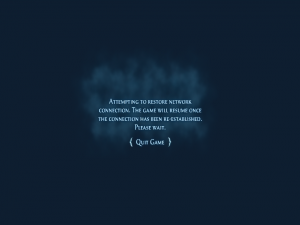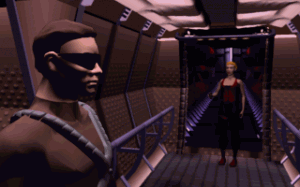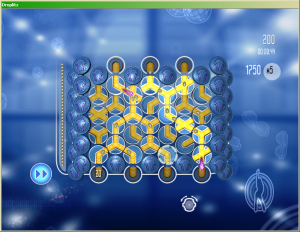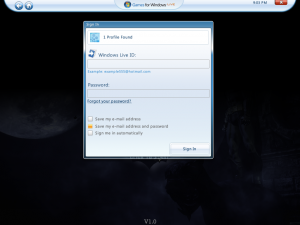Three Failures
Last night, I was tired, and not in the mood for anything stressful or taxing. Going back to Super Meat Boy, or even to the lesser challenge of Heroes Chronicles, was out of the question. So I turned to my largish sub-stack of things bought in recent Steam sales that I haven’t even tried yet.
The first thing I tried was Safecracker: The Ultimate Puzzle Adventure. I suppose it says something about me that a puzzle game — yea, a self-proclaimed ultimate puzzle game — is my idea of something neither stressful nor taxing. But I had every reason to believe that this would be essentially just a gallery of soup cans, where the scope of every puzzle is well-defined and there’s no possibility of negative consequences. After all, that’s what the original Safecracker was. I could be wrong; I realize that it’s not the same game. But I didn’t at first. It was many months after S:TUPA was added to Steam that a discussion in a completely different context (roughly “This is just like that puzzle in Safecracker!” “What? I’ve played Safecracker and I don’t remember any puzzle like this.”) made me aware that it was a sequel. I think understand why the makers decided to obscure this: if it were called Safecracker II, there would be potential customers who would decide not to play it because they hadn’t played the original, or who decided to play the original first and found it so off-putting that they never bought the second. But the title they chose almost kept me from buying it, and I’m their target audience. There must be some better compromise.
At any rate, I couldn’t get S:TUPA going at all on my system. Starting it just locked my machine up with no video output. Possibly it was defaulting to a resolution that my monitor doesn’t support, but even then, you’d think I’d get some background music or something. I have seen this game running on a modern system, though, so it’s probably a solvable problem. But it wasn’t the sort of puzzle I was in the mood for, so I switched games.
Next up, I tried The Ball, a first-person puzzler, which is to say, a game that owes a great deal to Portal, even though the theme here is Aztec ruins (with hints of Ancient Astronaut) rather than sterile white corridors. The main conceit is obstacles that can only be overcome by using a large, unwieldy metal ball, a unique item doesn’t necessarily easily go where it’s needed. Your main control over it is a handheld device that’s something like a ball-specific version of the gravity gun from Half-Life 2: you can use it to attract the ball when it’s in range, and also to smack it like a pinball and send it careening forward. Maybe I was doing things suboptimally, but I found that I used the attract mode to move the ball around most of the time, which means that the ball spent a lot of time right in my face, which is always awkward in a first-person game. The designers understand the problem, and compensate for it by making the ball go transparent when it blocks your view significantly, leaving only some bands solid. I felt that even this cluttered the view uncomfortably.
When I started the game, I noticed that Steam listed some “Last played” data, which struck me as strange, because I had never actually played it before. But then I remembered that I had attempted to play it back when I first bought it, only to have it crash immediately. This time, I fared better: it lasted about a half an hour before crashing, long enough for me to get not quite all the way through the first level. Since this level is pretty tutorial-like, I still don’t think I really have a good idea of what the gameplay is like or how hard the puzzles are.
With that, I gave up on puzzle games and tried out Lego Batman, something that had struck me as a good idea back in 1997 when I played Lego Star Wars. After an overlong intro sequence involving some rather forced slapstick — perhaps my tastes have changed in the last four years? — I made Lego Batman run around and hit people for a few minutes, just long enough to decide that this is a game best controlled with a gamepad rather than mouse and keboard. But my system wouldn’t recognize my trusty DualShock + USB Adapter until I rebooted, and after that, it wouldn’t start the game again. It kept throwing up Windows “illegal operation” dialogs.
It’s likely that all these problems, and probably other recent problems as well (like my difficulties with Arthur’s Knights), have a common root in my hardware, probably that the fan on the video card is clogged with dust again or something similarly foolish. But I didn’t feel like doing anything as stressful and taxing as troubleshooting hardware, so I spent the rest of the evening watching a movie instead. At least I can scratch two of the three games off the list of things I’ve purchased but not actually played.
 Comments(0)
Comments(0)


